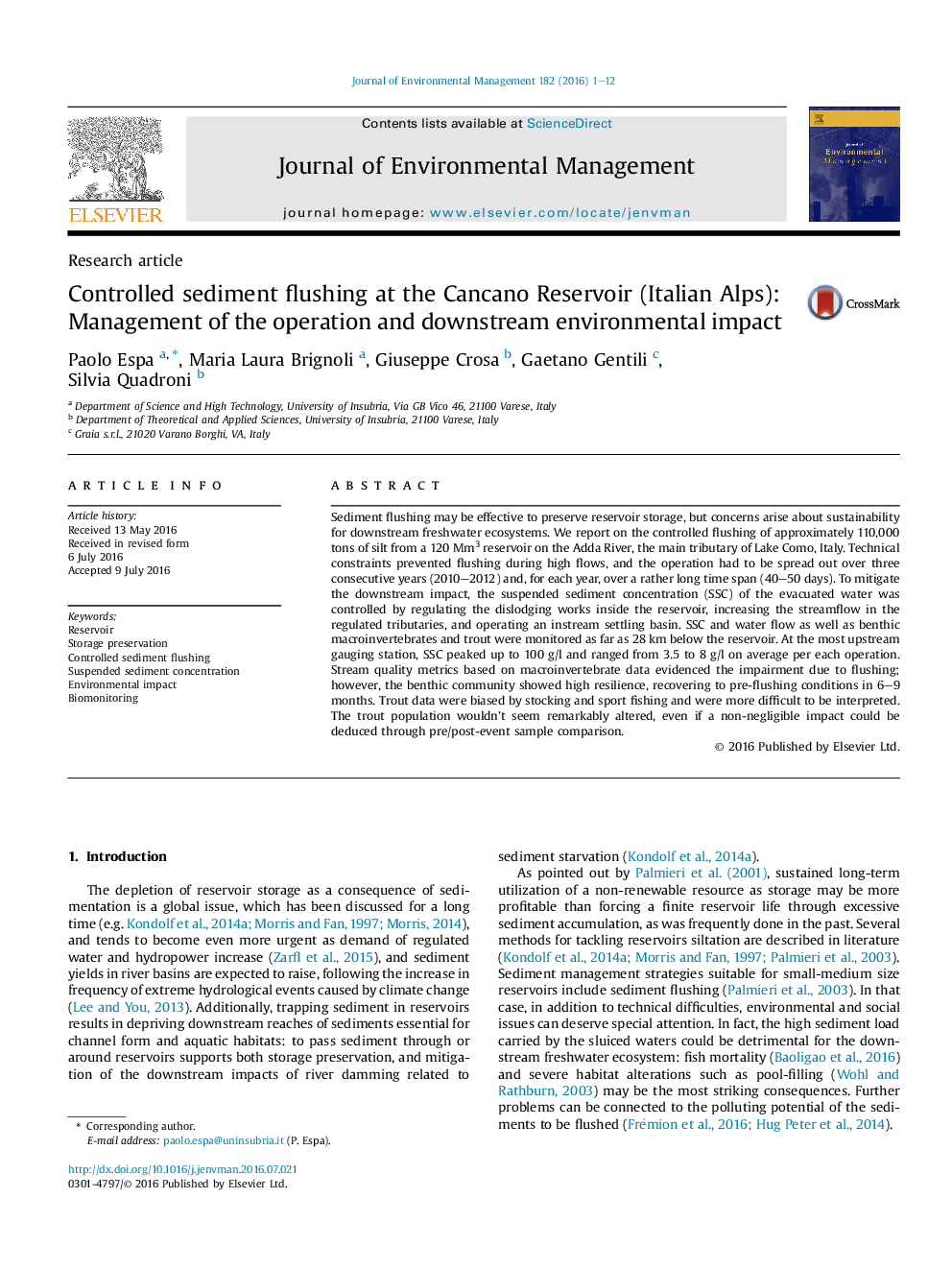| Article ID | Journal | Published Year | Pages | File Type |
|---|---|---|---|---|
| 7478879 | Journal of Environmental Management | 2016 | 12 Pages |
Abstract
Sediment flushing may be effective to preserve reservoir storage, but concerns arise about sustainability for downstream freshwater ecosystems. We report on the controlled flushing of approximately 110,000 tons of silt from a 120Â Mm3 reservoir on the Adda River, the main tributary of Lake Como, Italy. Technical constraints prevented flushing during high flows, and the operation had to be spread out over three consecutive years (2010-2012) and, for each year, over a rather long time span (40-50 days). To mitigate the downstream impact, the suspended sediment concentration (SSC) of the evacuated water was controlled by regulating the dislodging works inside the reservoir, increasing the streamflow in the regulated tributaries, and operating an instream settling basin. SSC and water flow as well as benthic macroinvertebrates and trout were monitored as far as 28Â km below the reservoir. At the most upstream gauging station, SSC peaked up to 100Â g/l and ranged from 3.5 to 8Â g/l on average per each operation. Stream quality metrics based on macroinvertebrate data evidenced the impairment due to flushing; however, the benthic community showed high resilience, recovering to pre-flushing conditions in 6-9 months. Trout data were biased by stocking and sport fishing and were more difficult to be interpreted. The trout population wouldn't seem remarkably altered, even if a non-negligible impact could be deduced through pre/post-event sample comparison.
Related Topics
Physical Sciences and Engineering
Energy
Renewable Energy, Sustainability and the Environment
Authors
Paolo Espa, Maria Laura Brignoli, Giuseppe Crosa, Gaetano Gentili, Silvia Quadroni,
